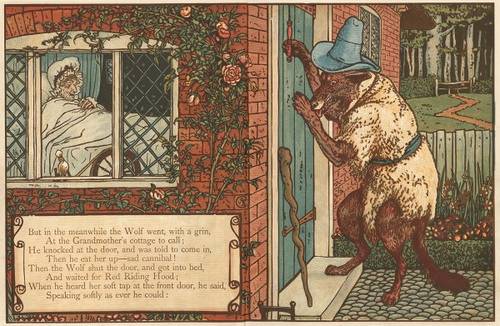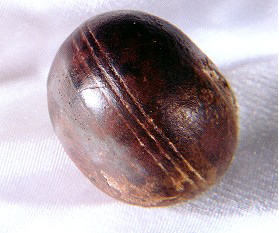
From Henry Dudeney:
A ball 13 inches in diameter has a hole 5 inches wide drilled through the center. How deep is the hole?

From Henry Dudeney:
A ball 13 inches in diameter has a hole 5 inches wide drilled through the center. How deep is the hole?
“An idea isn’t responsible for the people who believe in it.” — Don Marquis
111111111111111111111111111111111111111111111111111111111111111111111111111111111111111111 111111111111111111111111111111111111111111111111111111111111111111111111111111111111111111
111111111111111111111111111111111111111111111111111111111111111111111111111111111111111111
111111111111111111111111111111111111111111111111111111111111111111111111111111111111111111
111111111111111111111111111111111111111111111111111111111111111111111111111111111111111111
111111111111111111111111111111111111111111111111111111111111111111111111111111111111111111
111111111111111111111111111111111111111111111111111111111111111111111111111111111111111111
111111111111111111111111111111111111111111111111111111111111111111111111111111111111111111
111111111111111111111111111111111111111111111111111111111111111111111111111111111111111111
111111111111111111111111111111111111111111111111111111111111111111111111111111111111111111
111111111111111111111111111111111111111111111111111111111111111111111111111111111111111111
11111111111111111111111111111111111111111 is prime.

LITTLE RED RIDING HOOD is an anagram of THE DOOR RING TIDED ILL.
More than eleven thousand pounds sterling worth of silver is wasted every year in the course of the circulation of crowns, half-crowns, florins, shillings, and sixpences. One hundred sovereigns of the date of 1820, which were weighed in 1859 by Mr. Miller, showed a loss in weight through the wear of circulation which was estimated at £1 6s. 7d. There is, therefore, more waste produced in the circulation of gold and silver coins than is generally thought of. …
Mr. Miller some years ago made a number of precise experiments, from which it was ascertained that £100 worth of sovereigns lost £3 9s. 8.4d. of their value in a hundred years; similarly £100 worth of half-crowns lost £13 11s. 8.8d.; £100 worth of shillings, £36 14s. 3.1d.; and £100 worth of sixpences lost £50 18s. 9.8d. in value, or more than one-half in the hundred years.
– The World of Wonders, 1883
aquabib
n. a drinker of water

For years, South African miners have been finding disks and spheres like this one. Usually brown or red, the objects can measure up to 10 centimeters in diameter, and like this one they’re often engraved with parallel grooves or ridges.
How could worked artifacts have found their way into mineral deposits that are billions of years old? Did aliens visit southern Africa in the remote past? Or is the region’s geologic history vastly different than we’d imagined?
Neither. Despite their artificial appearance, geologists say the objects arose naturally, probably as concretions as volcanic sediments in the region hardened into pyrophyllite.
See The Eltanin Antenna.
O precious codex, volume, tome,
Book, writing, compilation, work,
Attend the while I pen a pome,
A jest, a jape, a quip, a quirk.
For I would pen, engross, indite,
Transcribe, set forth, compose, address,
Record, submit–yea, even write
An ode, an elegy to bless–
To bless, set store by, celebrate,
Approve, esteem, endow with soul,
Commend, acclaim, appreciate,
Immortalize, laud, praise, extol
Thy merit, goodness, value, worth,
Experience, utility–
O manna, honey, salt of earth,
I sing, I chant, I worship thee!
How could I manage, live, exist,
Obtain, produce, be real, prevail,
Be present in the flesh, subsist,
Have place, become, breathe or inhale
Without thy help, recruit, support,
Opitulation, furtherance,
Assistance, rescue, aid, resort,
Favour, sustention, and advance?
Alack! Alack! and well-a-day!
My case would then be dour and sad,
Likewise distressing, dismal, gray,
Pathetic, mournful, dreary, bad.
Though I could keep this up all day,
This lyric, elegiac, song,
Meseems hath come the time to say
Farewell! Adieu! Good-by! So long!
— Franklin P. Adams, collected in Carolyn Wells, The Book of Humorous Verse, 1920

Introduced at the end of the 19th century, hail cannons offered farmers a novel way to protect their crops: They could disrupt the formation of hailstones by blasting sound at approaching storms.
Unfortunately, there’s no scientific evidence that they work. And anyway, if loud sounds can prevent hail, won’t thunder do the work for us?
See also Japanese War Tuba.
The following question was a favourite topic for discussion, and thousands of the acutest logicians, through more than one century, never resolved it: ‘When a hog is carried to market with a rope tied about its neck, which is held at the other end by a man, whether is the hog carried to market by the rope or the man?’
— Isaac Disraeli, Curiosities of Literature, 1893